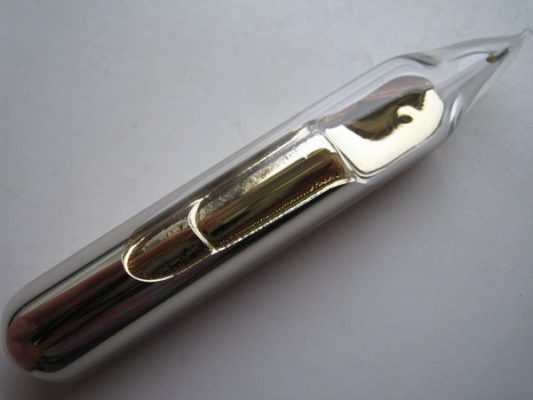Prospect Resources recently discovered a much sought after chemical element or metal used mainly in high temperature or high-pressure oil and gas drilling, Caesium at Acardia Lithium. We did a bit a research to find out more about the mineral and here is brief info on the mineral.
Caesium is a chemical element with the symbol Cs and atomic number 55. It is a soft, silvery-golden alkali metal with a melting point of 28.5 °C (83.3 °F), which makes it one of only five elemental metals that are liquid at or near room temperature. Caesium has physical and chemical properties similar to those of rubidium and potassium. The most reactive of all metals, it is pyrophoric and reacts with water even at −116 °C (−177 °F). It is the least electronegative element, with a value of 0.79 on the Pauling scale. It has only one stable isotope, caesium-133.
Caesium is mined mostly from pollucite, while the radioisotopes, especially cesium-137, a fission product, are extracted from waste produced by nuclear reactors.
Physical properties
Caesium is the softest element (it has a hardness of 0.2 Mohs). It is a very ductile, pale metal, which darkens in the presence of trace amounts of oxygen. When in the presence of mineral oil (where it is best kept during transport), it loses its metallic lustre and takes on a duller, grey appearance. It has a melting point of 28.5 °C (83.3 °F), making it one of the few elemental metals that are liquid near room temperature. Mercury is the only elemental metal with a known melting point lower than Caesium. In addition, the metal has a rather low boiling point, 641 °C (1,186 °F), the lowest of all metals other than mercury. Its compounds burn with a blue or violet color.
Production
Mining and refining pollucite ore is a selective process and is conducted on a smaller scale than for most other metals. The ore is crushed, hand-sorted, but not usually concentrated, and then ground. Caesium is then extracted from pollucite primarily by three methods: acid digestion, alkaline decomposition, and direct reduction.
In the acid digestion, the silicate pollucite rock is dissolved with strong acids, such as hydrochloric (HCl), sulfuric (H2SO4), hydrobromic (HBr), or hydrofluoric (HF) acids. With hydrochloric acid, a mixture of soluble chlorides is produced, and the insoluble chloride double salts of Caesium are precipitated as Caesium antimony chloride (Cs4SbCl7), Caesium iodine chloride (Cs2ICl), or Caesium Hexachlorocerate (Cs2(CeCl
6)). After separation, the pure precipitated double salt is decomposed, and pure CsCl is precipitated by evaporating the water.
Applications
Petroleum exploration, Atomic clocks, SI Units, Electric power and electronics, Centrifugation fluids, Chemical and medical use, Nuclear and isotope applications.
About Prospect Resources
Prospect is an Australia listed firm involved in the exploration and mining of lithium, used to make electric vehicle batteries and in the ceramics industry.
.png)




